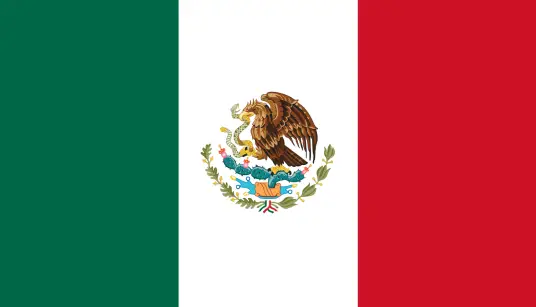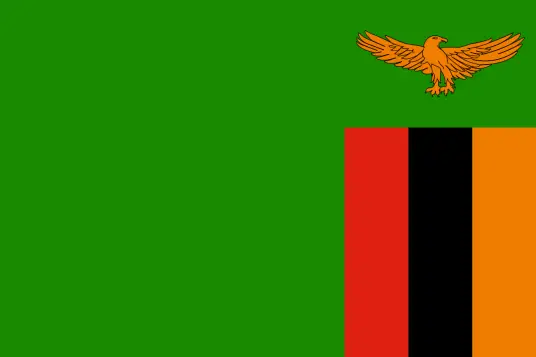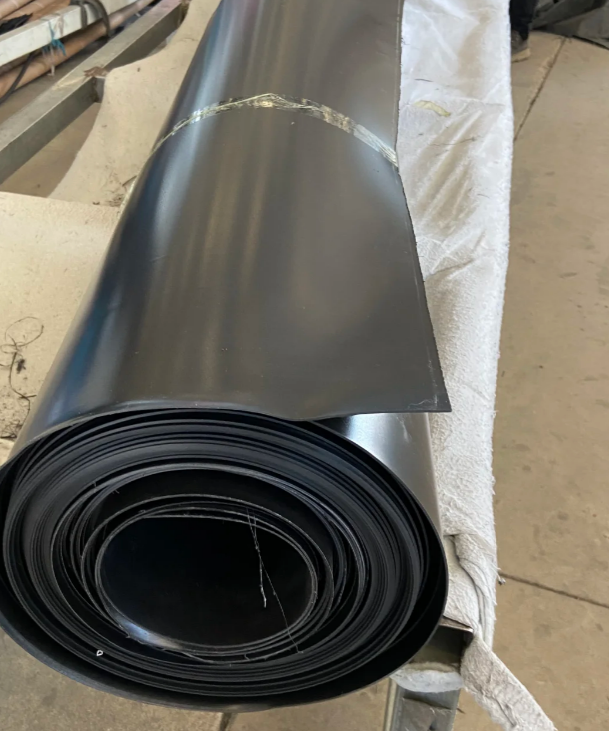
-
 Español
Español
-
 Portugues
Portugues
-
 Pусский
Pусский
-
 Français
Français
-
 Deutsch
Deutsch
-
 日本語
日本語
-
 한국어
한국어
-
 العربية
العربية
-
 Italiano
Italiano
-
 Nederlands
Nederlands
-
 Ελληνικά
Ελληνικά
-
 Svenska
Svenska
-
 Polski
Polski
-
 ไทย
ไทย
-
 Türk dili
Türk dili
-
 हिन्दी
हिन्दी
-
 Indonesia
Indonesia
-
 Melayu
Melayu
-
 Tiếng Việt
Tiếng Việt
-
 中文
中文
-
 dansk
dansk
-
 Magyar
Magyar
-
 қазақ
қазақ
-
 বাংলা
বাংলা
-
 עִברִית
עִברִית
-
 čeština
čeština
-
 Soomaali
Soomaali
-
 မြန်မာ
မြန်မာ
-
 فارسی
فارسی
-
 українська
українська
-
 norsk
norsk
-
 Gaeilge
Gaeilge
-
 беларускі
беларускі
-
 Română
Română
-
 ພາສາລາວ
ພາສາລາວ
-
 Filipino
Filipino
-
 lietuvių
lietuvių
-
 Cymraeg
Cymraeg
-
 македонски
македонски
-
 Suomalainen
Suomalainen
-
 slovenský
slovenský
-
 o'zbek
o'zbek
-
 اردو
اردو
-
 հայերեն
հայերեն
-
 Igbo
Igbo
-
 български
български
-
 سنڌي
سنڌي
-
 Shona
Shona
-
 සිංහල
සිංහල
-
 Hrvatski
Hrvatski
-
 íslenskur
íslenskur
-
 galego
galego
-
 català
català
-
 Zulu South Africa
Zulu South Africa
-
 Afrikaans isiXhosa
Afrikaans isiXhosa
-
 ಕನ್ನಡ
ಕನ್ನಡ
-
 lëtzebuergesch
lëtzebuergesch
-
 Indonésia Sunda
Indonésia Sunda
-
 basa jawa
basa jawa
-
 ગુજરાતી
ગુજરાતી
-
 Кыргызча
Кыргызча
-
 тоҷикӣ
тоҷикӣ
-
 Србија
Србија
-
 Twi
Twi
-
 Hawaii
Hawaii
-
 Cebu
Cebu
-
 नेपाल
नेपाल
-
 euskara
euskara
-
 Kurdî
Kurdî
-
 frissi
frissi
-
 יידיש
יידיש
-
 latvija
latvija
-
 slovenija
slovenija
-
 kiswahili
kiswahili
-
 ਪੰਜਾਬ
ਪੰਜਾਬ
-
 پښتو
پښتو
-
 საქართველოს
საქართველოს
-
 hua moni
hua moni
-
 bosna
bosna
-
 తెలుగు
తెలుగు
-
 தமிழ்
தமிழ்
-
 Kreyòl ayisyen
Kreyòl ayisyen
-
 Eesti
Eesti
-
 Corsica
Corsica
-
 Yoruba
Yoruba
-
 Gàidhlig na h-Alba
Gàidhlig na h-Alba
-
 Samoa
Samoa
-
 Монгол
Монгол
-
 Hausa
Hausa
-
 Azərbaycan
Azərbaycan
-
 አማራ
አማራ
-
 Shqipëria
Shqipëria
-
 Malagasy
Malagasy
-
 मराठी
मराठी
-
 മലയാളം
മലയാളം
-
 Malta
Malta
-
 ខ្មែរ
ខ្មែរ
-
 Chicheva
Chicheva
-
 中文(繁体)
中文(繁体)
-
 ଓଡିଆ
ଓଡିଆ
-
 Setswana
Setswana
-
 Afrikaans
Afrikaans
-
 Aymara
Aymara
-
 Башҡорт
Башҡорт
-
 Türkmenler
Türkmenler
-
 ትግሪኛ
ትግሪኛ
-
 Afaan Oromoo
Afaan Oromoo
-
 অসমীয়া
অসমীয়া
-
 Kinyarwanda
Kinyarwanda
-
 Ilocano
Ilocano
-
 Wolof
Wolof
-
 अवधी
अवधी
-
 Oluganda
Oluganda
-
 Bikol
Bikol
-
 Fulɓe
Fulɓe
-
 Kikongo
Kikongo
-
 Sango
Sango
-
 ދިވެހި
ދިވެހި
-
 Lingala
Lingala
-
 मैथिली
मैथिली
-
 Tsonga
Tsonga
-
 ꯃꯦꯏ ꯊꯥꯏ꯫
ꯃꯦꯏ ꯊꯥꯏ꯫
-
 brezhoneg
brezhoneg
-
 Furlan
Furlan
-
 नेवा
नेवा
-
 རྫོང་ཁ
རྫོང་ཁ
-
 Santali
Santali
-
 Аҧсуа
Аҧсуа
-
 Нохчийн
Нохчийн
-
 Чӑваш
Чӑваш
-
 Татар
Татар
-
 Batak Karo
Batak Karo
-
 دری
دری
-
 Diura
Diura
-
 Fengyu
Fengyu
-
 Eʋegbe
Eʋegbe
-
 Iban
Iban
-
 Fiji
Fiji
-
 Tonga
Tonga
-
 Inuktitut
Inuktitut
-
 Nahuatl
Nahuatl
-
 maaya yucatec
maaya yucatec
-
 Runasimi
Runasimi
-
 guarani
guarani
-
 Qafar
Qafar
-
 Acholi
Acholi
-
 Dinka
Dinka
-
 Luo
Luo
-
 Lundi
Lundi
-
 isiNdebele
isiNdebele
-
 Tshivenḓa
Tshivenḓa
-
 Sesotho sa Leboa
Sesotho sa Leboa
-
 Sesotho sa Borwa
Sesotho sa Borwa
-
 Ndumbe
Ndumbe
-
 Papuan Pidgin
Papuan Pidgin
-
 Rromani ćhib
Rromani ćhib
-
 Thok Nath
Thok Nath
yuxiatugong@163.com
+86 18353494641
-
 Español
Español
-
 Portugues
Portugues
-
 Pусский
Pусский
-
 Français
Français
-
 Deutsch
Deutsch
-
 日本語
日本語
-
 한국어
한국어
-
 العربية
العربية
-
 Italiano
Italiano
-
 Nederlands
Nederlands
-
 Ελληνικά
Ελληνικά
-
 Svenska
Svenska
-
 Polski
Polski
-
 ไทย
ไทย
-
 Türk dili
Türk dili
-
 हिन्दी
हिन्दी
-
 Indonesia
Indonesia
-
 Melayu
Melayu
-
 Tiếng Việt
Tiếng Việt
-
 中文
中文
-
 dansk
dansk
-
 Magyar
Magyar
-
 қазақ
қазақ
-
 বাংলা
বাংলা
-
 עִברִית
עִברִית
-
 čeština
čeština
-
 Soomaali
Soomaali
-
 မြန်မာ
မြန်မာ
-
 فارسی
فارسی
-
 українська
українська
-
 norsk
norsk
-
 Gaeilge
Gaeilge
-
 беларускі
беларускі
-
 Română
Română
-
 ພາສາລາວ
ພາສາລາວ
-
 Filipino
Filipino
-
 lietuvių
lietuvių
-
 Cymraeg
Cymraeg
-
 македонски
македонски
-
 Suomalainen
Suomalainen
-
 slovenský
slovenský
-
 o'zbek
o'zbek
-
 اردو
اردو
-
 հայերեն
հայերեն
-
 Igbo
Igbo
-
 български
български
-
 سنڌي
سنڌي
-
 Shona
Shona
-
 සිංහල
සිංහල
-
 Hrvatski
Hrvatski
-
 íslenskur
íslenskur
-
 galego
galego
-
 català
català
-
 Zulu South Africa
Zulu South Africa
-
 Afrikaans isiXhosa
Afrikaans isiXhosa
-
 ಕನ್ನಡ
ಕನ್ನಡ
-
 lëtzebuergesch
lëtzebuergesch
-
 Indonésia Sunda
Indonésia Sunda
-
 basa jawa
basa jawa
-
 ગુજરાતી
ગુજરાતી
-
 Кыргызча
Кыргызча
-
 тоҷикӣ
тоҷикӣ
-
 Србија
Србија
-
 Twi
Twi
-
 Hawaii
Hawaii
-
 Cebu
Cebu
-
 नेपाल
नेपाल
-
 euskara
euskara
-
 Kurdî
Kurdî
-
 frissi
frissi
-
 יידיש
יידיש
-
 latvija
latvija
-
 slovenija
slovenija
-
 kiswahili
kiswahili
-
 ਪੰਜਾਬ
ਪੰਜਾਬ
-
 پښتو
پښتو
-
 საქართველოს
საქართველოს
-
 hua moni
hua moni
-
 bosna
bosna
-
 తెలుగు
తెలుగు
-
 தமிழ்
தமிழ்
-
 Kreyòl ayisyen
Kreyòl ayisyen
-
 Eesti
Eesti
-
 Corsica
Corsica
-
 Yoruba
Yoruba
-
 Gàidhlig na h-Alba
Gàidhlig na h-Alba
-
 Samoa
Samoa
-
 Монгол
Монгол
-
 Hausa
Hausa
-
 Azərbaycan
Azərbaycan
-
 አማራ
አማራ
-
 Shqipëria
Shqipëria
-
 Malagasy
Malagasy
-
 मराठी
मराठी
-
 മലയാളം
മലയാളം
-
 Malta
Malta
-
 ខ្មែរ
ខ្មែរ
-
 Chicheva
Chicheva
-
 中文(繁体)
中文(繁体)
-
 ଓଡିଆ
ଓଡିଆ
-
 Setswana
Setswana
-
 Afrikaans
Afrikaans
-
 Aymara
Aymara
-
 Башҡорт
Башҡорт
-
 Türkmenler
Türkmenler
-
 ትግሪኛ
ትግሪኛ
-
 Afaan Oromoo
Afaan Oromoo
-
 অসমীয়া
অসমীয়া
-
 Kinyarwanda
Kinyarwanda
-
 Ilocano
Ilocano
-
 Wolof
Wolof
-
 अवधी
अवधी
-
 Oluganda
Oluganda
-
 Bikol
Bikol
-
 Fulɓe
Fulɓe
-
 Kikongo
Kikongo
-
 Sango
Sango
-
 ދިވެހި
ދިވެހި
-
 Lingala
Lingala
-
 मैथिली
मैथिली
-
 Tsonga
Tsonga
-
 ꯃꯦꯏ ꯊꯥꯏ꯫
ꯃꯦꯏ ꯊꯥꯏ꯫
-
 brezhoneg
brezhoneg
-
 Furlan
Furlan
-
 नेवा
नेवा
-
 རྫོང་ཁ
རྫོང་ཁ
-
 Santali
Santali
-
 Аҧсуа
Аҧсуа
-
 Нохчийн
Нохчийн
-
 Чӑваш
Чӑваш
-
 Татар
Татар
-
 Batak Karo
Batak Karo
-
 دری
دری
-
 Diura
Diura
-
 Fengyu
Fengyu
-
 Eʋegbe
Eʋegbe
-
 Iban
Iban
-
 Fiji
Fiji
-
 Tonga
Tonga
-
 Inuktitut
Inuktitut
-
 Nahuatl
Nahuatl
-
 maaya yucatec
maaya yucatec
-
 Runasimi
Runasimi
-
 guarani
guarani
-
 Qafar
Qafar
-
 Acholi
Acholi
-
 Dinka
Dinka
-
 Luo
Luo
-
 Lundi
Lundi
-
 isiNdebele
isiNdebele
-
 Tshivenḓa
Tshivenḓa
-
 Sesotho sa Leboa
Sesotho sa Leboa
-
 Sesotho sa Borwa
Sesotho sa Borwa
-
 Ndumbe
Ndumbe
-
 Papuan Pidgin
Papuan Pidgin
-
 Rromani ćhib
Rromani ćhib
-
 Thok Nath
Thok Nath

News Center
News Center
HOT PRODUCT
Slope Protection Geotextile for Riverbank and Channel Lining
2025-10-17 08:10:43

Slope Protection Geotextile for Riverbank and Channel Lining
1. Introduction
Riverbanks and channels are critical components of natural and engineered water systems, playing essential roles in flood control, water conveyance, and ecosystem stability. However, these structures are highly susceptible to erosion caused by flowing water, wave action, and environmental factors. To mitigate erosion and enhance stability, slope protection measures are necessary. Among the most effective solutions is the use of geotextiles—a permeable synthetic material designed to reinforce soil, control erosion, and improve drainage.
This paper explores the application of geotextiles for slope protection in riverbanks and channel linings, discussing their types, functions, installation methods, and benefits. Additionally, it examines design considerations and case studies to demonstrate their effectiveness in erosion control and environmental sustainability.
---
2. Types of Geotextiles for Slope Protection
Geotextiles are categorized based on their manufacturing process and structural properties. The two primary types used in slope protection are:
2.1 Woven Geotextiles
Woven geotextiles are manufactured by interlacing synthetic fibers (typically polypropylene or polyester) in a systematic pattern. They offer high tensile strength and low elongation, making them suitable for applications requiring reinforcement and load distribution.
Advantages:
- High strength-to-weight ratio
- Excellent resistance to punctures and abrasion
- Effective in stabilizing steep slopes
Applications:
- Riverbank reinforcement
- Channel lining
- Retaining wall backfill stabilization
2.2 Non-Woven Geotextiles
Non-woven geotextiles are produced by bonding synthetic fibers mechanically, thermally, or chemically. They are highly permeable and primarily used for filtration and drainage.
Advantages:
- Superior filtration properties
- High water permeability
- Effective in preventing soil migration
Applications:
- Erosion control mats
- Subsurface drainage systems
- Vegetation support in bioengineering solutions
---
3. Functions of Geotextiles in Slope Protection
Geotextiles serve multiple functions in riverbank and channel protection:
3.1 Erosion Control
Geotextiles act as a barrier against water-induced erosion by dissipating hydraulic energy and preventing soil particle displacement. They are often used in combination with riprap, gabions, or vegetation to enhance stability.
3.2 Soil Reinforcement
By distributing loads and improving shear resistance, geotextiles reinforce weak soils, preventing slope failures. This is particularly important in areas with high water flow velocities.
3.3 Filtration and Drainage
Geotextiles allow water to pass while retaining soil particles, preventing clogging of drainage systems. This function is crucial in maintaining slope integrity under saturated conditions.
3.4 Vegetation Support
In bioengineering applications, geotextiles provide a stable medium for plant roots to establish, promoting natural slope stabilization through vegetation growth.
---
4. Installation Methods
Proper installation is critical for the effectiveness of geotextiles in slope protection. The following steps outline a typical installation process:
4.1 Site Preparation
- Clear the area of debris, vegetation, and loose soil.
- Grade the slope to the desired angle and compact the subgrade.
4.2 Geotextile Placement
- Roll out the geotextile along the slope, ensuring minimal wrinkles and overlaps (typically 12–24 inches).
- Secure the geotextile with stakes or anchors to prevent displacement during backfilling.
4.3 Backfilling and Covering
- Place a layer of granular fill or riprap over the geotextile to protect it from UV degradation and mechanical damage.
- Compact the cover material to ensure stability.
4.4 Vegetation Integration (Optional)
- If using biodegradable geotextiles, plant vegetation to enhance long-term erosion control.
---
5. Design Considerations
Several factors must be considered when designing geotextile-reinforced slopes:
5.1 Hydraulic Conditions
- Water velocity, wave action, and flow direction influence the selection of geotextile type and thickness.
5.2 Soil Properties
- Soil type, permeability, and shear strength determine the required geotextile specifications.
5.3 Environmental Impact
- Biodegradable geotextiles may be preferred in ecologically sensitive areas to minimize long-term environmental effects.
5.4 Durability Requirements
- UV resistance, chemical stability, and abrasion resistance must be evaluated based on project lifespan.
---
6. Benefits of Geotextiles in Riverbank and Channel Protection
6.1 Cost-Effectiveness
Geotextiles reduce the need for heavy rock armoring, lowering material and labor costs.
6.2 Long-Term Stability
Unlike traditional methods, geotextiles provide continuous reinforcement, reducing maintenance requirements.
6.3 Environmental Sustainability
Geotextiles support vegetation growth, enhancing biodiversity while preventing erosion.
6.4 Adaptability
They can be customized for various slope angles, soil types, and hydraulic conditions.
---
7. Case Studies
7.1 Riverbank Stabilization in a Flood-Prone Region
A study in a flood-prone river demonstrated that woven geotextiles combined with riprap reduced erosion by 80% over five years compared to unprotected slopes.
7.2 Channel Lining in Urban Drainage Systems
Non-woven geotextiles used in urban stormwater channels improved filtration and prevented sediment buildup, enhancing drainage efficiency.
---
8. Conclusion
Geotextiles offer a versatile, cost-effective, and sustainable solution for slope protection in riverbanks and channels. Their ability to control erosion, reinforce soil, and support vegetation makes them indispensable in modern civil engineering. Proper selection, design, and installation are crucial to maximizing their benefits. As environmental concerns grow, geotextiles will continue to play a vital role in balancing engineering needs with ecological preservation.
By integrating geotextiles into erosion control strategies, engineers and environmentalists can ensure long-term stability and resilience in waterway management.
---
This paper provides a comprehensive overview of geotextile applications in slope protection, emphasizing their advantages, installation techniques, and real-world effectiveness. Future research should explore advanced geotextile composites and their performance under extreme climatic conditions.








 Phone
Phone
Comment
(0)